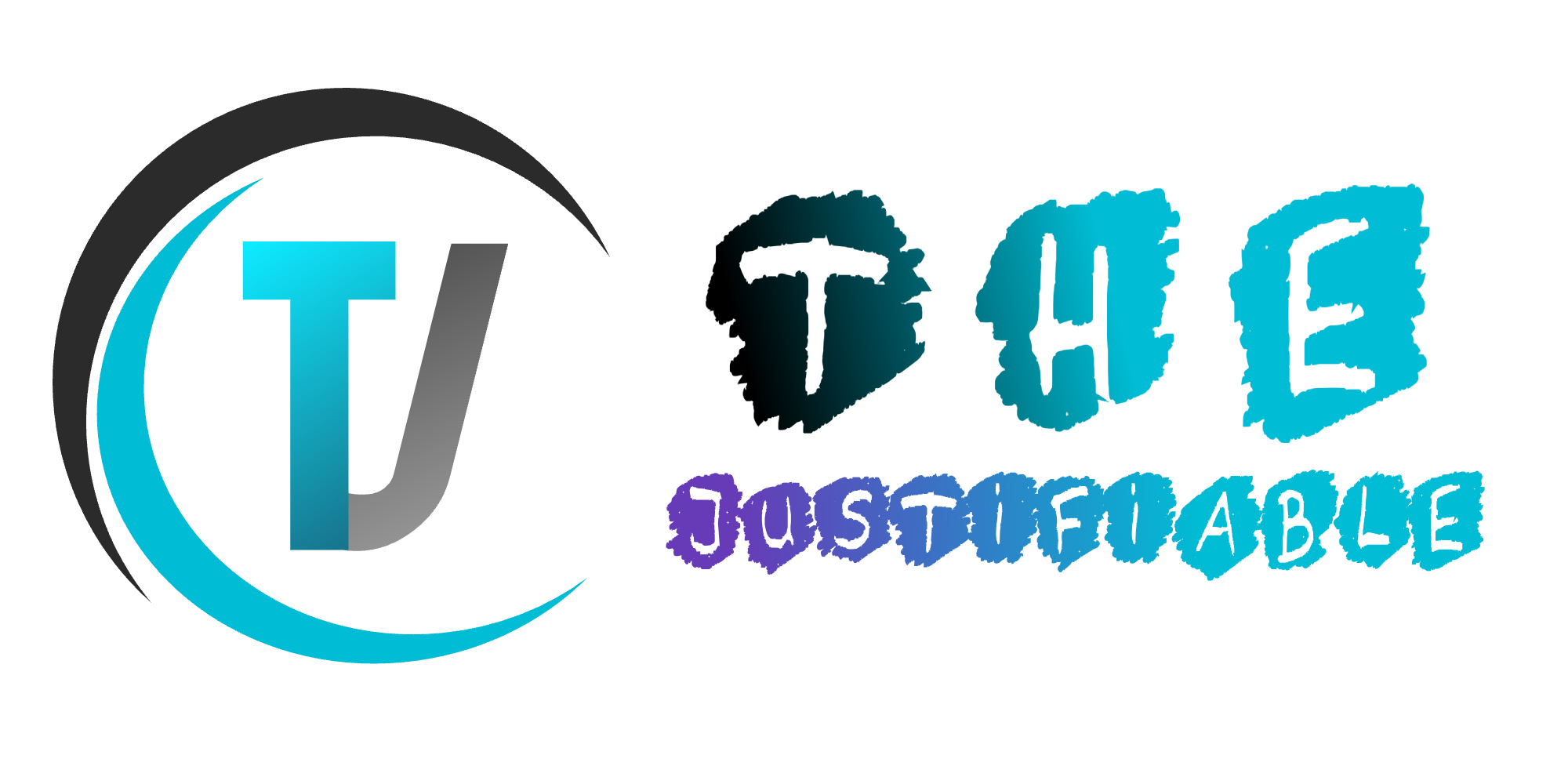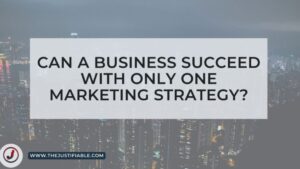Table of Contents
Best blog examples don’t just entertain—they inspire, educate, and even influence decisions across every industry. But what makes a blog truly stand out? Is it the storytelling, the design, or the way it solves reader problems? And how do different industries—from travel to finance—use blogs in unique ways to connect with their audiences?
In this guide, we’ll walk through blog examples that actually work, breaking down the strategies behind them so you can see why they succeed. Whether you’re a business owner, a marketer, or just someone curious about what the best blogs look like in action, you’ll find practical takeaways you can apply to your own content.
Best Blog Examples for the Technology Industry
Tech blogs thrive when they balance authority with accessibility. The best ones don’t just show off knowledge — they teach, simplify, and guide readers who might otherwise feel lost in a world of code and acronyms.
Showcasing Thought Leadership in Software Development Blogs
If you’ve ever read a developer blog that made you pause and think, “Wow, they’re shaping the future here,” that’s thought leadership in action. It’s not about cramming in buzzwords; it’s about showing deep understanding of where technology is headed.
For example, blogs like Martin Fowler’s or Google Developers Blog consistently share insights into evolving coding practices, architecture, and frameworks. They don’t just describe what’s happening; they explain why it matters and what it means for developers today.
If you’re building a tech blog yourself, here’s how to achieve this:
- Share predictions based on real-world experience. Instead of saying “AI is the future,” explain how it’s currently reshaping testing workflows or backend systems.
- Break down complex innovations into human language. Pretend you’re explaining it to a smart but non-technical friend.
- Use diagrams or quick flowcharts to illustrate workflows. A simple visual of “old process vs. new process” goes a long way.
I believe the secret is to mix humility with authority. Admit what’s still uncertain, but also show where you’ve drawn conclusions. Readers respect honesty more than vague confidence.
How Tech Blogs Use Tutorials to Drive Engagement
Tutorials are the bread and butter of tech blogs. People don’t just want to hear about a new library or API — they want to know how to use it. That’s why blogs like freeCodeCamp dominate search results. They create tutorials that guide readers step by step, with plenty of screenshots and snippets.
A good tech tutorial always:
- States the goal clearly upfront (“In this tutorial, we’ll build a simple to-do app with React”).
- Walks through the process in logical steps without skipping the “obvious” parts.
- Includes copy-paste-ready code blocks. Don’t make readers retype boilerplate.
- Ends with a working example or GitHub repo so they can see the finished product.
One trick I use: build the tutorial as if you’re learning alongside the reader. If you hit a snag, document it. This makes your tutorial feel real, not staged. That authenticity makes people trust you and come back.
The Role of Product Reviews in Building Trust
Tech readers are constantly deciding: “Should I use this tool or that one?” Reviews cut through the noise. Done right, a blog review isn’t just about features; it’s about context. For instance, TechCrunch might highlight broad industry impact, while Smashing Magazine dives into developer experience.
If you’re writing product reviews, try this formula:
- Set the scene: Who is this tool for? A solo developer? An enterprise team?
- Show real usage: Include screenshots from the dashboard. (“From the dashboard, click Settings > Integrations to connect Slack in under 2 minutes.”)
- Compare alternatives: Readers love side-by-side comparisons. A simple table works wonders.
- Be honest about flaws: Credibility comes from admitting weaknesses. If a platform has a steep learning curve, say it.
I suggest sprinkling in your personal experience. Something like, “I tested this for two weeks on a client project, and here’s what stood out…” That line alone separates your blog from generic marketing copy.
Best Blog Examples for the Health and Wellness Industry
Health and wellness blogs succeed when they inspire, educate, and reassure. The best ones make readers feel like they’re sitting down with a trusted friend, not being lectured by a textbook.
How Wellness Blogs Use Personal Journeys to Inspire Readers
Readers connect with people more than with perfect advice. That’s why personal journey blogs like The Balanced Life resonate. They mix storytelling with lessons.
When you share your journey, you give readers a sense of “If they did it, I can too.” For instance:
- Write about your first failed attempt at running a marathon, then explain what you learned about pacing and nutrition.
- Document the messy side of change. Readers value honesty over polished success stories.
- Use before-and-after visuals, not just for weight loss but for lifestyle shifts (like stress levels or sleep patterns).
I believe wellness blogs that show vulnerability have stronger staying power. They stop being just “blogs” and start becoming communities.
Effective Use of Expert Advice in Health Blogs
Not everyone trusts anecdotal advice. Health blogs that shine often blend personal stories with expert insights. For example, Healthline consistently references doctors, dietitians, or peer-reviewed studies.
Here’s how you can integrate expert advice into your own blog:
- Interview professionals and quote them directly. (“According to Dr. Ramirez, a consistent sleep routine lowers cortisol levels by up to 30%.”)
- Link out to credible sources in plain language. Don’t drop jargon-heavy research without context.
- Use sidebars or callouts to highlight “Pro Tips from Experts.”
This mix of personal voice and professional backing helps you stand out from the flood of wellness content. Readers trust you because you’ve built a bridge between real life and science.
Creating Authority with Research-Backed Wellness Content
Wellness is full of fads. To cut through, research-backed content positions your blog as a trustworthy source. Blogs like Precision Nutrition thrive because they translate science into everyday advice.
Imagine writing a blog post on intermittent fasting. Instead of just saying “It helps with weight loss,” you could:
- Summarize findings: “In a 2021 study, participants following 16:8 fasting lost an average of 7% body fat over 12 weeks.”
- Break down what this means practically: “This could be as simple as skipping breakfast and eating between 12–8 pm.”
- Add caveats: “Results vary, and fasting isn’t suitable for everyone. Talk to a doctor before starting.”
I’d advise presenting the data visually, maybe with a chart comparing results from different studies. People process numbers faster when they see them.
Best Blog Examples for the Finance Industry
Finance blogs are at their best when they demystify money. Nobody wants to read financial jargon — they want to feel like someone’s walking them through a confusing maze with a flashlight.
How Financial Blogs Simplify Complex Topics for Readers
Think of NerdWallet. They take intimidating subjects — credit scores, retirement plans, crypto taxes — and break them down into bite-sized explanations.
To do this yourself:
- Start with an analogy. Explain compound interest like planting a tree: the earlier you plant, the bigger it grows.
- Define terms inline. If you mention “APR,” immediately follow with “(that’s the yearly cost of borrowing, including fees).”
- Use short, punchy paragraphs and avoid walls of text.
I suggest using comparison charts. For example, if you’re explaining Roth vs. Traditional IRAs, show a side-by-side table of differences. This makes it digestible and instantly useful.
The Power of Step-By-Step Money Management Guides
People don’t just want to know about budgeting — they want to be walked through it. That’s why posts like “How to Save $10K in a Year” get so much traction.
Here’s a structure that works well:
- State the goal clearly. (“Save $10,000 in 12 months.”)
- Break it down monthly. (“That’s about $833 per month, or $27 per day.”)
- Show real-life strategies, like using apps (YNAB, Mint) or automating transfers.
- Include printable or downloadable trackers.
Readers love leaving a blog post with a practical tool. I recommend making your guide interactive if possible — calculators and checklists boost engagement and keep people coming back.
Using Data and Statistics to Build Authority in Finance Blogs
Numbers are everything in finance. When you back up advice with data, your blog instantly feels more trustworthy.
For example:
- If you’re writing about credit card debt, share the stat: “The average American carries $6,088 in credit card debt.”
- Use graphs to show trends, like how interest rates have changed over the last decade.
- Reference government data sources (like the Federal Reserve or Bureau of Labor Statistics), then explain them simply.
The trick is translating data into impact. Don’t just throw numbers at people — explain what they mean for their lives. “If the Fed raises interest rates by 1%, your mortgage payment could rise by $150 per month.” That’s the kind of insight that sticks.
Best Blog Examples for the Travel Industry
Travel blogs shine when they take readers on a journey even before they book a ticket. The best ones combine storytelling, visuals, and practical advice that makes people think, “I could go there too.”
How Travel Blogs Capture Attention with Storytelling
Storytelling is what transforms a destination from a name on a map into a lived experience. Blogs like Nomadic Matt don’t just list things to do — they weave personal stories into guides.
A good travel story usually:
- Starts with a hook (a moment of surprise, challenge, or delight).
- Mixes sensory details — describe the smell of street food, the chaos of a crowded market, the silence of a mountain trail.
- Ties back to something the reader can relate to. (“I felt the same nerves you might before traveling solo for the first time.”)
When I write about travel, I like to share the messy moments too — getting lost, ordering the wrong food, or the awkward silence in a language barrier. Those little stumbles are what make travel feel real, and readers trust you more when you’re not just showing the polished highlights.
Using Visual Content to Elevate Travel Experiences
Travel is visual by nature, and blogs that master photography and video have a clear advantage. Think of blogs that use maps, drone shots, or interactive photo sliders. It’s not just pretty — it adds context.
Here’s how to do it well:
- Use before/after sliders to show a location at sunrise vs. sunset.
- Add interactive maps (“Here’s the route I took from Tokyo to Kyoto — click to explore each stop”).
- Insert short, looping videos (a waterfall, a bustling street) to give the reader motion and atmosphere.
Even simple visuals work. A quick screenshot from Google Maps with your custom pins can guide readers better than a long paragraph.
I recommend embedding photos with captions that give context, not just “Beach in Bali” but “The hidden beach you’ll reach after a 20-minute hike from Uluwatu Temple.”
Highlighting Destination Guides That Build Credibility
Destination guides are the backbone of travel blogs. The best examples don’t just say what to see; they show how to do it efficiently and enjoyably.
A strong guide should include:
- Logistics: Best times to visit, average costs, transport options.
- Insider tips: How to avoid tourist traps, where locals actually eat.
- Personal touches: “I stayed at a guesthouse where the owner baked fresh bread every morning — highly recommend if you want a homely feel.”
What builds trust is depth. Don’t just say “Try local food” — give readers the exact stall, price, and what you ordered. That level of detail makes your blog their go-to source, instead of yet another “Top 10” list.
Best Blog Examples for the Education Industry
Education blogs work best when they simplify learning and make concepts accessible. The strongest examples strike a balance between clarity and authority, giving students or educators practical tools they can use right away.
Breaking Down Lessons with Easy-to-Read Learning Blogs
The most effective education blogs turn heavy concepts into snackable lessons. Think of Khan Academy’s blog or teacher-led blogs that explain math, science, or writing tips.
Here’s what works:
- Use plain language with real-world comparisons. “Think of the mitochondria like a battery that powers the cell.”
- Keep explanations short and layered. Start simple, then expand with deeper details.
- Add visual aids — diagrams, charts, or infographics that summarize the key points.
I recommend building a “bite-size format” into your posts: start with a short summary of the lesson, then provide an example problem and a quick test question. It keeps learning interactive instead of passive.
How Education Blogs Use Case Studies to Teach Effectively
Case studies bring abstract concepts to life. For instance, a business education blog might explain supply chain management through the lens of how Amazon delivers packages in 24 hours.
When writing case studies:
- Begin with a problem. (“Students struggled to grasp fractions in class.”)
- Show the process. (“We introduced pizza slice visuals and real-world scenarios.”)
- End with the outcome. (“Scores improved by 20% after this change.”)
Case studies also work for higher education or professional learning. Imagine an ed-tech blog showing how a school used a learning management system (LMS) to track student progress. Screenshots of the dashboard make it real and practical.
The Role of Resources and Toolkits in Student-Focused Blogs
Students (and teachers) love tools that make learning easier. Education blogs that share worksheets, downloadable templates, or app recommendations stand out.
Some practical examples:
- A printable timeline for history lessons.
- A free Google Sheets budget tracker for students learning personal finance.
- A curated list of apps for note-taking or flashcards (Quizlet, Notion).
What I’ve seen work well is bundling resources with your blog post. Instead of just writing about essay structure, add a PDF checklist. This makes readers return to your blog because you’re not just explaining — you’re equipping them.
Best Blog Examples for the Food and Beverage Industry
Food blogs succeed when they make readers hungry and capable of recreating the experience at home. The most popular ones combine recipes, personal stories, and community.
How Recipe Blogs Turn Cooking into Engaging Experiences
Recipe blogs aren’t just about food — they’re about connection. A simple recipe becomes engaging when you add context. Blogs like Smitten Kitchen don’t just say “Here’s pasta.” They tell you about the night they cooked it, the family memories tied to it, and tips for making it easier.
What makes recipes engaging:
- Step-by-step photos. Don’t just show the final dish — show the process.
- Tips for substitutions. (“No fresh basil? Dried works too, just use half the amount.”)
- Personal anecdotes. (“I first cooked this when I was broke in college, and it’s still a go-to comfort food.”)
I advise writing recipes like you’re teaching a beginner friend. Make it encouraging, not intimidating.
Building Communities Through Food Storytelling Blogs
Food is about people as much as taste. Blogs that thrive often create a sense of belonging. They don’t just share recipes — they share stories.
Think of blogs that dive into cultural traditions. A post about dumplings could talk about family gatherings, heritage, and memories of cooking together. These layers create emotional resonance.
Community-building strategies:
- Invite readers to share their own variations in the comments.
- Highlight reader photos (“Here’s how Maria made this soup her own”).
- Host challenges (“Cook one new vegetable dish this week and share it”).
Food blogs become more than recipe indexes when they spark conversation. That’s what keeps people coming back.
The Use of Step-By-Step Cooking Guides to Attract Readers
Step-by-step guides are gold in food blogging because they eliminate guesswork. Think of Serious Eats — their recipes often break down techniques like searing or fermentation in detail.
Here’s how to nail a cooking guide:
- Begin with a clear promise. (“Learn how to make sourdough bread from scratch, even if you’ve never baked before.”)
- Provide ingredient photos upfront so readers can visualize what they need.
- Break the process into numbered steps with times and visual cues. (“Knead until the dough springs back when poked, about 8 minutes.”)
- Include troubleshooting. (“If your dough is too sticky, add a tablespoon of flour at a time.”)
Adding little pro tips (“I recommend letting the dough rest overnight in the fridge for better flavor”) elevates your credibility. It’s those small touches that separate a blog from a recipe aggregator.
Best Blog Examples for the Fashion and Lifestyle Industry
Fashion and lifestyle blogs are powerful because they shape culture, identity, and even spending habits. The best ones don’t just post outfits — they influence how readers see themselves.
How Fashion Blogs Use Trends to Stay Relevant
Fashion moves fast. What’s in style this month may be outdated next season. Successful blogs like Man Repeller (before it rebranded) and Who What Wear built authority by staying on top of micro-trends and explaining them in simple, accessible ways.
A strong trend-focused blog post usually includes:
- A quick summary of the trend (“Cargo pants are back — and here’s how to wear them without looking like it’s 2003”).
- Styling examples with photos or even short try-on videos.
- Suggestions at different price points (luxury, mid-range, budget-friendly).
I suggest treating trend posts like mini-guides. Readers want answers to “Is this for me?” and “Where do I buy it?” not just runway recaps. Including shoppable links or comparison tables (e.g., “Zara $59 vs. The Row $590”) makes your blog actionable and builds trust.
The Influence of Lifestyle Blogs on Purchasing Decisions
Lifestyle blogs blur the line between content and commerce. A good example is Cup of Jo, which blends personal storytelling with product recommendations. Readers don’t feel “sold to” because the advice is wrapped in relatable context.
Here’s what works:
- Incorporate products naturally into stories. (“When I moved into my first tiny apartment, this space-saving desk saved me.”)
- Use affiliate links sparingly and only for products you genuinely recommend.
- Offer honest pros and cons. Readers are quick to notice when every product review sounds too polished.
I’ve found that personal experience makes a huge difference. If you’ve used a product for months, tell readers how it held up. That kind of long-term perspective is rare and valuable.
Showcasing Authenticity Through Personal Style Narratives
Fashion isn’t just about trends — it’s about identity. Blogs that thrive often share personal style journeys. Think of influencers who let you see their trial-and-error moments, not just their polished looks.
What authenticity looks like:
- Sharing older outfits to show how your style has evolved.
- Talking about challenges (“I struggled with body image, so fashion became a way to rebuild confidence”).
- Mixing high-end with everyday pieces, showing readers that style is about creativity, not money.
In my opinion, authenticity is the ultimate differentiator in fashion blogging. Trends change, but your voice and story are what keep readers loyal.
Best Blog Examples for the Marketing and Business Industry
Business and marketing blogs succeed when they provide clarity and evidence. Readers are often professionals looking for strategies they can apply immediately — they don’t have time for fluff.
How Marketing Blogs Use Case Studies to Prove Strategies
Case studies are gold in marketing blogs. They turn abstract tactics into real-world wins. For example, HubSpot’s blog often walks through campaigns that boosted leads or conversions.
When writing case studies:
- Start with the challenge. (“The client needed to increase email open rates by 20%.”)
- Walk through the strategy. (“We A/B tested subject lines using humor vs. urgency.”)
- Show results with real numbers. (“The humorous subject line boosted opens by 34%.”)
I recommend including screenshots from dashboards (Mailerlite, Google Analytics, LinkedIn Ads) so readers see exactly how you measured success. That kind of transparency builds credibility and helps readers replicate your process.
Building Authority with Thought Leadership in Business Blogs
Thought leadership happens when a blog consistently provides insights others aren’t offering. Harvard Business Review is a prime example. They don’t just say “remote work is growing” — they analyze its long-term effects on management and culture.
To do this yourself:
- Write about what you’re seeing in your own industry. (“In my work, I’ve noticed small businesses are shifting ad spend from Instagram to TikTok.”)
- Back your claims with data when possible, but keep explanations simple.
- Don’t be afraid to challenge common wisdom. Readers respect bold but reasoned takes.
I believe the best thought leadership blends expertise with humility — admit what’s uncertain, but explain clearly what the evidence suggests.
Using How-To Guides to Educate Business Professionals
How-to guides are the backbone of marketing blogs because professionals want actionable steps. Think of Neil Patel’s blog, which often provides step-by-step breakdowns.
Here’s a strong framework:
- Define the task clearly. (“How to run your first Google Ads campaign.”)
- Walk through each step with UI instructions. (“From the dashboard, click Campaigns > Create a Campaign > Search.”)
- Provide screenshots or short GIFs to eliminate confusion.
- Share a pro tip or shortcut. (“Duplicate your best-performing ad groups instead of building new ones from scratch.”)
Professionals want clarity and confidence. If your guide helps them achieve something they’ve been stuck on, they’ll bookmark your blog and return for more.
Best Blog Examples for the Nonprofit and Social Impact Industry
Nonprofit blogs play a unique role: they don’t just inform — they inspire action. The best examples combine emotional storytelling, transparency, and education to move readers toward real-world impact.
Inspiring Action with Storytelling in Nonprofit Blogs
Stories are at the heart of nonprofit blogs. Charity: Water’s blog is a great example — they don’t just talk about wells; they share the story of individuals whose lives changed because of access to clean water.
To inspire action:
- Focus on one person’s story rather than general statistics.
- Use vivid details that make the story relatable.
- End with a clear call to action. (“Donate $30 to give someone like Amina clean water for a year.”)
I suggest using photos or short videos when possible. Seeing the faces behind the cause creates emotional connection faster than words alone.
How Nonprofit Blogs Use Transparency to Build Trust
Donors want to know their money is used wisely. Nonprofit blogs that share budgets, progress updates, and challenges stand out. For example, posting a breakdown like:
- 80% program delivery
- 15% administration
- 5% fundraising
…instantly builds trust.
You can also:
- Share behind-the-scenes content (photos of the team in action).
- Publish reports in plain language, not just formal PDFs.
- Acknowledge setbacks and explain how you’re addressing them.
I believe transparency is the fastest way to turn one-time donors into long-term supporters.
The Power of Educational Content in Driving Donations
Educational content transforms a passive reader into an engaged advocate. Blogs like WWF’s Panda Blog explain environmental issues in digestible ways, often paired with actions readers can take.
Examples of educational content:
- Explainers (“What is carbon offsetting, and how does it work?”).
- How-to posts (“5 ways to reduce plastic in your daily routine”).
- Data-driven posts that clarify scope (“Every year, 8 million tons of plastic enter our oceans — here’s what that looks like in real life”).
The magic happens when you connect education directly to action. “Here are steps you can take, and here’s how your donation helps scale these solutions.” That bridge between learning and doing is what makes nonprofit blogs powerful.
Best Blog Examples for Content Types That Convert
Some blog formats consistently outperform others when it comes to conversions. Whether it’s building trust, getting shares, or driving sign-ups, these are the content types that work.
How-to Guides That Solve Reader Problems
How-to guides are conversion machines because they give readers immediate value. Instead of vague advice, they show people exactly how to solve a problem.
Think about a blog teaching someone to set up Google Analytics. A weak post says, “Track your site traffic with Google Analytics.” A strong one says, “From the dashboard, click Admin > Property Settings > Data Streams, then paste your tracking ID into your CMS.” That specificity builds authority.
To make how-to guides convert better:
- Start with the problem. (“Struggling to get more email subscribers?”)
- Offer a solution with step-by-step clarity.
- Add screenshots or UI instructions.
- End with a next step — like downloading a free template, joining a webinar, or trying a tool.
I advise making guides layered: basic steps for beginners, then advanced tips for those ready to level up. That way, you’re serving multiple reader types in one post.
Listicle Blogs That Capture Attention and Shareability
Listicles work because they promise scannable, bite-sized insights. People love knowing exactly what they’ll get — “10 Tools for Better Remote Work” feels digestible before you’ve even clicked.
The best listicles:
- Use clear numbering (so readers know how far they’ve gotten).
- Give each item substance. Don’t write one sentence per list point; make each mini-section a valuable takeaway.
- Add images, charts, or short examples to break monotony.
I believe listicles shine when they mix the obvious with the surprising. If nine tools are common, the tenth should be a hidden gem. That’s what makes readers share it — they want to look like they’ve discovered something new.
Opinion Blogs That Build Authority Through Unique Insights
Opinion blogs can position you as a thought leader if done right. They’re not about rants; they’re about offering a perspective others aren’t seeing.
For example: a marketing blogger might write, “AI won’t replace marketers — it will replace bad marketing.” That’s bold, memorable, and sparks discussion.
To write opinion pieces that convert:
- Back your stance with reasoning or examples.
- Use a conversational, confident voice (without being arrogant).
- Invite dialogue. Readers love to comment on strong opinions.
In my experience, opinion posts often get fewer clicks than listicles but far more engagement in the comments and on social media. That engagement builds authority and trust.
Visual and Multimedia Blogs That Engage Beyond Text
Some readers learn better visually. Multimedia blogs — with charts, infographics, videos, or even interactive tools — grab those readers immediately.
Practical examples:
- A recipe blog with embedded TikTok cooking clips.
- A marketing blog with animated charts showing traffic growth.
- An education blog with downloadable PDFs or interactive quizzes.
I recommend creating at least one “pillar post” that combines text, visuals, and media. Not only does it improve engagement, but multimedia often keeps readers on your page longer — which helps SEO.
Best Blog Examples for Content Types That Drive SEO
Certain blog formats aren’t just good for readers — they’re designed to feed Google what it wants. Done right, these types will keep traffic flowing for years.
Evergreen Blogs That Sustain Long-Term Traffic
Evergreen blogs are posts that stay relevant long after they’re published. Think “How to Write a Resume” or “Best Time to Visit Paris.” These don’t expire like trend-based posts.
What makes evergreen blogs powerful:
- They answer timeless questions.
- They can be updated yearly with fresh stats or examples.
- They become “link magnets” because other sites reference them.
I suggest creating at least a few cornerstone evergreen posts for your niche. They’ll bring in consistent traffic while you experiment with trendier content.
FAQ Blogs That Answer Reader Questions Directly
FAQ blogs are underrated but incredibly effective. They target long-tail searches like “How long does shipping take from X?” or “Can I cancel my subscription anytime?”
The structure is simple:
- One question = one answer.
- Use conversational language.
- Where possible, link to deeper resources.
I’ve seen FAQ blogs work best for businesses because they reduce support tickets and attract SEO traffic at the same time. They also win featured snippets on Google (“People Also Ask” boxes).
Comparison Blogs That Influence Purchase Decisions
When people are close to buying, they often search “X vs Y.” Comparison blogs meet that exact need.
For example: “Aweber vs Omnisend: Which Is Better for Beginners?” A great comparison blog doesn’t just list features — it explains context.
What to include:
- Side-by-side tables of features.
- Screenshots of UI differences.
- Honest recommendations. (“If you’re a beginner, choose Mailchimp. If you need automation, ConvertKit is stronger.”)
I recommend writing comparisons as if you’re advising a friend. Transparency builds trust, which turns into conversions.
Expert Tips for Creating a Best Blog in Your Industry
No matter your niche, the principles of building one of the best blogs remain the same. It comes down to clarity, trust, and consistent value.
Focus on Providing Actionable Value in Every Post
People return to blogs that solve problems. Every post should leave the reader with something practical they can use right away.
Quick check: after reading your draft, ask, “Did I give the reader a tool, step, or insight they can act on today?” If not, revise.
Use Data, Research, and Storytelling Together
Data proves credibility, but storytelling makes it relatable. Combine both.
For instance: “A recent survey found 68% of workers feel burned out. When I hit burnout myself, I solved it by cutting evening screen time — and here’s the science on why that worked.”
That mix of personal and factual builds authority without being dry.
Keep Content Fresh, Relevant, and Reader-Focused
Even evergreen posts need updates. Outdated screenshots, old stats, or dead links can kill credibility fast.
I suggest building a content calendar not just for new posts but for updating old ones. A small refresh — like swapping in 2024 data or showing the new UI of a tool — keeps your blog competitive.
Pro tip: keep a simple Google Sheet where you list every post with its publish date, last update date, and next review date. Treat your blog like a garden — prune and refresh regularly.






